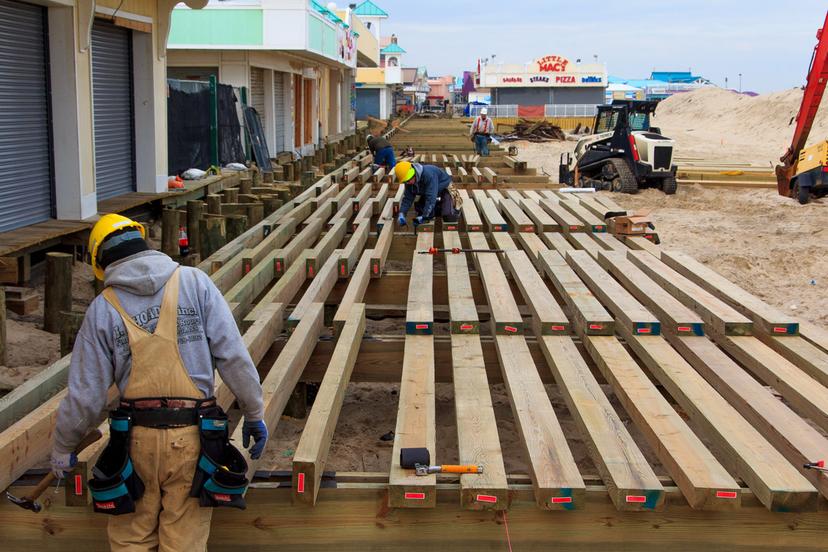Construction

Background
Construction is an industry that includes the erection, maintenance, and repair of buildings and other immobile structures, and the building of roads and service facilities that become integral parts of structures and are essential to their use. Construction includes structural additions and alterations but excludes the building of mobile structures such as trailers and ships.
Most of the earliest buildings have not survived to this century because they were made of nonpermanent materials. However, some structures that were made of stone and baked brick have survived. The 3,000-year-old Egyptian pyramids are assembled from mammoth stone blocks; the 2,500-year-old Mayan temples in Guatemala are hand-carved stone.
As builders began to understand the physics of a building, they were able to modify the structure to stand taller, have wider and more open rooms, and have windows to allow in light. Pillars allowed more open windows and wider rooms. Arches and vaults allowed buildings to have higher roofs. Two thousand years ago, the Romans developed a mix for concrete that was extremely strong and long lasting. In fact, today there are innumerable Roman structures still standing and some that are still used. The Romans built international roads, laying stones down for thousands of miles, to facilitate the movement of troops. They built aqueducts to move water hundreds of miles. They developed the first pipelines to move wine and olive oil from the villages to the shore where the products would be loaded on boats.
For the next 1,500 years, buildings and roads improved with new understandings of physics and new mixes of concretes and cements. The buildings remained brick, stone, concrete, wood, or other natural products. It was not until 1796, with the first iron-frame building in England, that the next major breakthrough in building design occurred. Cast-iron pillars allowed architects and builders a chance to construct buildings higher than 10 stories. By the 19th century, buildings were being constructed that were 14 and 15 stories high. These were the first skyscrapers. The new mechanical elevator allowed people to use floors too high to climb to by stairs.
Metal as a building material changed bridges, buildings, and tunnels; almost every structure was affected in design. Bridges could be designed to span across much larger waterways. Buildings eventually reached more than 100 stories. Tunnels could cross miles under rivers, even under the English Channel.
Today, the construction industry is still testing new materials and new methods of building with metals and synthetic products. Lighter, stronger materials allow the construction of larger, more open structures with less support. These new products are designed to withstand natural disasters, such as earthquakes and hurricanes.
The other major shift in the construction industry is the movement away from building new structures and toward repairing, expanding, and maintaining old structures. As cities become saturated with buildings, renovation and restructuring will become a common part of the building trades. Also, as the U.S. road and bridge system ages, repairs are needed to keep the vast transportation network in a usable condition.
By the early decades of the 21st century, three trends were having a significant impact on the construction industry. First is the trend toward the design-build model, in which the same firm designs and then builds the project, versus the traditional model, design-bid-build, in which the client has one firm design the project, then asks for bids from construction firms for building it. This trend, according to the American Institute of Steel Construction (AISC), is due to increased efficiencies experienced when using the design-build model.
The second trend is a shift from using computer-aided design (CAD) just for the design stage to using it for constructing 2-D drawings and 3-D models, which has led to a new movement called building information modeling (BIM). BIM means that all firms involved in the project can share the same plans, drawings, models, and information, resulting in cost savings and improved efficiencies.
The final trend is toward a construction model that seeks to minimize the impact on the environment and on natural resources, as it has been recognized that these resources are being used at a faster rate than they are being replenished, according to the AISC. This "green building" trend looks to undertake economical, efficient, and environmentally friendly construction.
